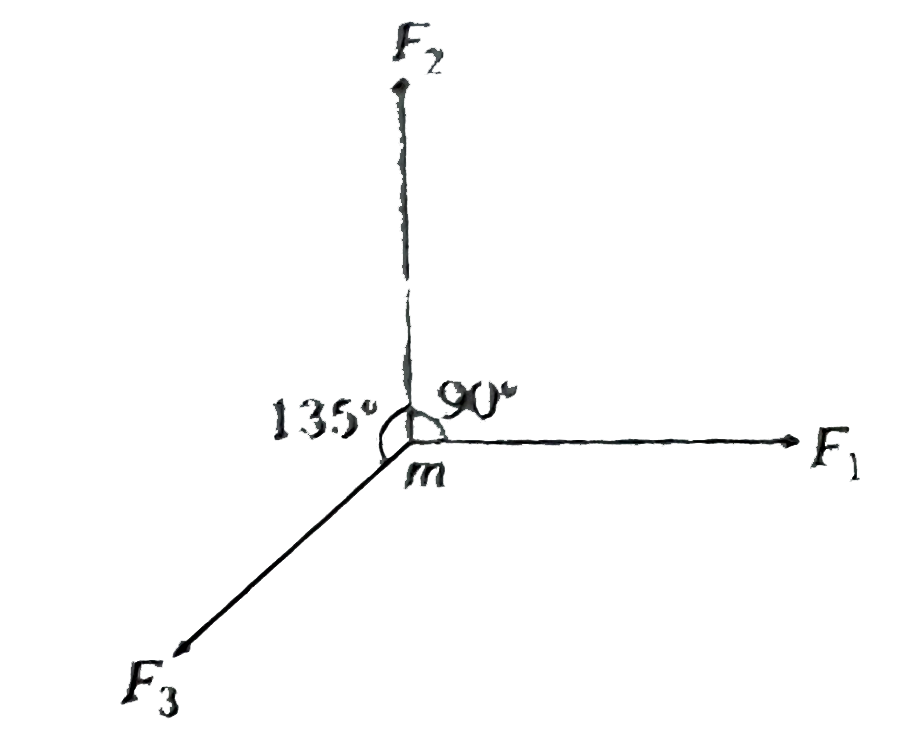A force of 15 N acts on a body of mass 2 kg. Calculate the acceleration produced.
To solve the problem of calculating the acceleration produced when a force of 15 N acts on a body of mass 2 kg, we can follow these steps:
1. Identify the Given Values:
- Force (F) = 15 N
- Mass (m) = 2 kg
2. Use Newton's Second Law of Motion:
- According to Newton's second law, the relationship between force, mass, and acceleration is given by the formula:
F=m⋅a
- Here, F is the force applied, m is the mass of the body, and a is the acceleration produced.
3. Rearrange the Formula to Solve for Acceleration (a):
- We can rearrange the formula to isolate a:
a=Fm
4. Substitute the Known Values into the Equation:
- Substitute F=15N and m=2kg into the equation:
a=15N2kg
5. Calculate the Acceleration:
- Perform the division:
a=7.5m/s2
6. Conclusion:
- The acceleration produced in the body when a force of 15 N acts on it is 7.5m/s2.
- Force (F) = 15 N
- Mass (m) = 2 kg
- According to Newton's second law, the relationship between force, mass, and acceleration is given by the formula:
F=m⋅a
- Here, F is the force applied, m is the mass of the body, and a is the acceleration produced.
- We can rearrange the formula to isolate a:
a=Fm
- Substitute F=15N and m=2kg into the equation:
a=15N2kg
- Perform the division:
a=7.5m/s2
- The acceleration produced in the body when a force of 15 N acts on it is 7.5m/s2.
Topper's Solved these Questions
- BOOK - ICSECHAPTER - LAWS OF MOTIONEXERCISE - TOPIC 2 (3 Marks Questions )11videos
LAWS OF MOTION
- BOOK - ICSECHAPTER - LAWS OF MOTIONEXERCISE - TOPIC 2 (4 Marks Questions )34videos
LAWS OF MOTION
- BOOK - ICSECHAPTER - LAWS OF MOTIONEXERCISE - TOPIC 1 (4 Marks Questions )1videos
LAWS OF MOTION
- BOOK - ICSECHAPTER - ICSE ANNUAL EXAMINATION -2020EXERCISE - SECTION-II45videos
ICSE ANNUAL EXAMINATION -2020
- BOOK - ICSECHAPTER - LIGHTEXERCISE - TOPIC 2 Spherical Mirrors (4 Marks Questions )9videos
LIGHT
Similar Questions
A force of 10 N acts on a body of mass 5 kg. Find the acceleration produced.
View SolutionA force of 20 N acts on a body of mass 5kg at rest. What is the acceleration of the body? What is its velocity after 5 seconds if the same force acts? After 5 seconds if the force ceases to act how will the body move?
View SolutionWhen a force F acts on a body of mass m the acceleration product in the body is a . If three equal forces F1=F2=F3=F act on the same body as shown in figure the acceleration produced is
 View Solution
View SolutionA force of 10 N acts on a body of mass 2 kg for 3s , initially at rest. Calculate change in momentum of the body.
View SolutionA force of 10 N acts on a body of mass 2 kg for 3s , initially at rest. Calculate the velocity acquired by the body
View SolutionWhen a force F acs on a body of mass m the acceleration product in the body is a . If htree equal forces F1=F2=F3=F act on the same body as shown in figure the accleration produced is
 View Solution
View SolutionA force of 5 N acts on a body for 2 milliseconds. Calculate the impulse. If the mass of the body is 5 g, calculate the change of velocity.
View SolutionIf a force of 30.6 kg acts on a 60 kg mass, calculate the resulting acceleration. (1 k.g of force = 9.8 newtons)
A. 5m/sec2
B. 2m/sec2
C. 0.5m/sec2
D. 9.8m/sec2View SolutionA force of 50 N acts on a body of mass 10 kg at rest. Its velocity after 5 seconds if the same force acts, is
View SolutionAt a place where the acceleration due to gravity is 10m sec−2 a force of 5 kg - wt acts on a body of mass 10 kg initially at rest. The velocity of the body after 4 second is
View Solution

